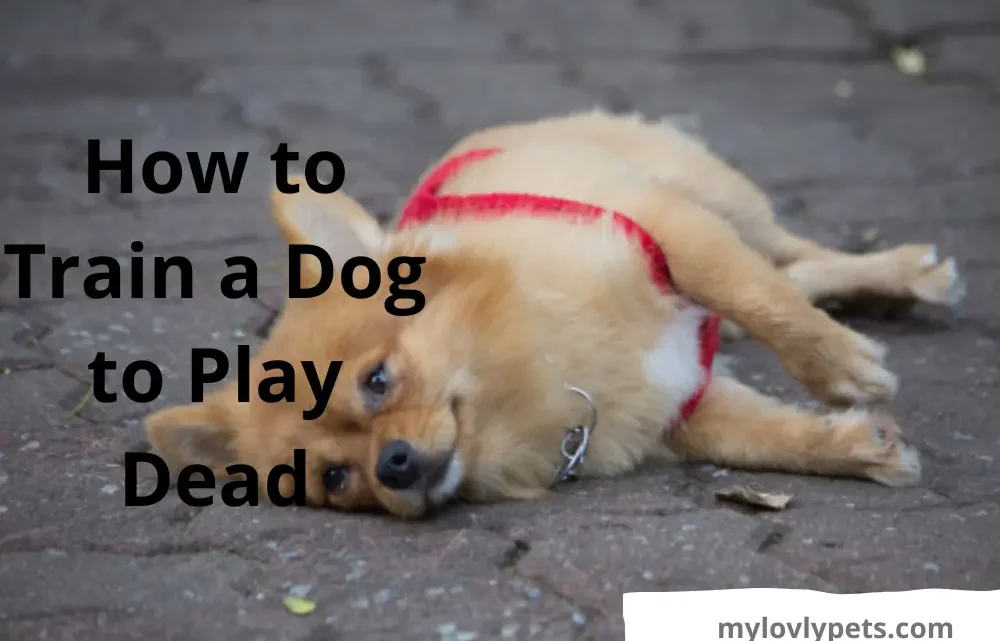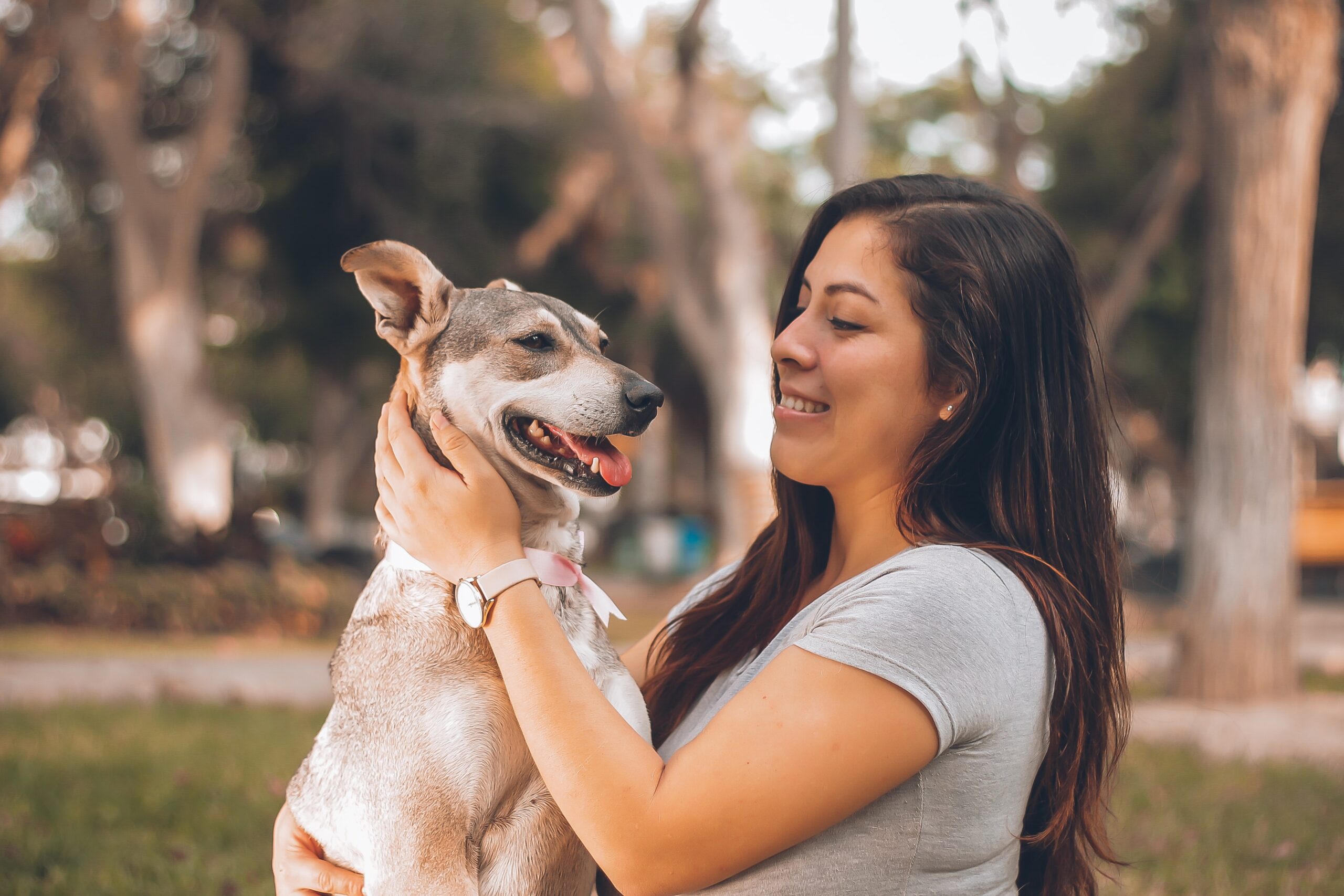
How to Train a Dog to Play Dead: Step-by-Step Guide & Expert Tips
When a dog plays dead, it’s more than just acting—it’s a behavior rooted in psychology and learning. The trick taps into dogs’ ability to follow cues, often based on classical conditioning. Basically, dogs learn that lying still in response to a specific command earns them rewards. The origins? Well, the “play dead” trick might have first gained popularity through pop culture, but it’s just another way dogs show off their smarts, right? It’s their version of playing along—no guns involved!
Why do people teach dogs to perform the “play dead” trick?
Why bother teaching a dog to play dead? For many owners, it’s about more than entertainment. Sure, it’s fun to watch, but it’s also a great way to bond with your dog. Training tricks like this helps enhance obedience, build trust, and deepen that connection. Plus, let’s face it—having your dog pull off this trick at the perfect moment is pure joy for both you and your audience!
Which Dog Breeds and Ages Are Best for Learning “Play Dead”?
Some dogs are just naturally inclined to learn tricks like “play dead,” while others may need a little more encouragement. Let’s break it down.
Breeds that excel at the “play dead” trick:
Certain breeds are basically born to be the star performers of your home. These dogs not only excel at obedience but also thrive on learning new tricks, including “play dead.”
- Border Collies: Known for their intelligence, Border Collies are quick learners and will have no trouble mastering this trick. They’re energetic and love to be mentally stimulated, making them great for any kind of training.
- Golden Retrievers: These loyal, friendly dogs are always up for a challenge, especially when there’s a reward involved. Golden Retrievers respond well to positive reinforcement, making them ideal for trick training.
- Poodles: Poodles are smart and versatile. They love engaging with their owners and enjoy learning, especially tricks that involve a little bit of flair.
Age considerations for teaching “play dead”:
When it comes to age, timing matters. Puppies and adult dogs may learn differently based on their developmental stages.
Adult dogs: Adult dogs, especially those with some training background, might grasp the “play dead” trick faster. They often have more patience and a longer attention span, but make sure to be patient, as they may be set in their ways.
Puppies: While puppies are highly receptive to learning, they tend to have shorter attention spans. Start with small steps and make it playful to keep their focus. Begin training early, but keep sessions short and sweet.
Understanding the right age to start and adjusting your approach is key to making the training fun and effective.
What Do You Need to Train Your Dog to Play Dead?
Training your dog to play dead requires more than just patience; it needs the right tools, methods, and rewards to keep your dog engaged and motivated.
Essential tools, rewards, and methods for effective training:
To set your dog up for success, you’ll need a few key training tools:
- Clicker: This is essential for marking the exact moment your dog performs the correct behavior. It helps reinforce learning.
- Treats: Every dog loves a good treat! Use high-value treats to reward successful attempts. Make sure they’re easy to eat quickly.
- Leash: Sometimes, a leash helps keep your dog in position while you guide them through the steps.
- Training Mats: These mats give your dog a clear, comfortable space to perform the trick.
Methods like shaping (gradually rewarding closer approximations of the behavior) and luring (using treats to guide your dog’s movements) are fundamental. Positive reinforcement will keep your dog motivated.
Positive reinforcement and motivational rewards for success:
When it comes to training, motivation is everything. The type of reward you use plays a big role in your dog’s success.
- Treats: Easy, effective, and always motivating! Opt for small, tasty rewards to keep your dog engaged without overfeeding.
- Toys: Some dogs prefer toys over food. Use their favorite toy as a reward when they successfully “play dead.”
- Praise: Never underestimate the power of a verbal cue! Saying “Good boy!” or “Well done!” with excitement can give your dog a boost, especially when combined with treats.
Always make sure to reward your dog immediately after they perform the behavior. Timing is key to helping them link the action with the reward.
How Long Does It Take to Train and Reinforce the “Play Dead” Trick?
Training your dog to play dead isn’t an overnight task. The timeline can vary depending on your dog’s breed, age, and how quickly they learn.
Expected timeline for training your dog to play dead:
How long does it really take? Well, it depends on a few things. If you’re working with a Border Collie or a Golden Retriever, you might see results in just a week or two. These breeds are fast learners and usually love showing off. However, if you’re working with a more independent breed like a Chow Chow, it could take longer—up to 3-4 weeks. Puppies tend to take a bit longer due to shorter attention spans, while adult dogs might catch on more quickly, especially if they’ve already learned basic commands.
Consistency and reinforcement for long-term success:
To make sure your dog keeps playing dead on command long after the initial training, consistency is key. It’s all about reinforcement. Set aside short, daily practice sessions—even 10-15 minutes can be enough. After your dog has learned the trick, don’t stop rewarding! Keep using treats or toys to reinforce their success. As they get better, reduce the frequency of rewards, but always offer praise. And remember, dogs thrive on routine, so practicing regularly ensures that the trick sticks! Keep it fun and avoid frustration, both for you and your dog.
Step-by-Step Guide to Teaching Your Dog to Play Dead
Teaching your dog to play dead involves clear steps and a consistent approach. Here’s how you can guide your dog, no matter their learning style:
1. Ensure Your Dog Knows the “Down” Command First
Before introducing the “play dead” trick, it’s essential that your dog understands the “down” command. This is the foundation for getting them into the correct position.
- Start by having your dog in the sit position.
- Show them a treat, then draw it back toward you at an angle until their belly touches the ground.
- As soon as your dog is lying down, say the “down” command and reward them immediately with the treat.
Repeat this process until they can follow the “down” command fluently, without needing the treat to guide them. This is crucial because playing dead involves lying on their side, and the “down” command sets that groundwork.
2. Introduce the “Play Dead” Command and Positioning
Now that your dog is comfortable with the “down” command, you can build on this position to teach play dead.
- Lure the Dog Into Position: Show a treat, and slowly move it in a way that encourages your dog to roll onto their side. This is where targeting or using a marker word becomes effective.
- Once your dog is on their side, use the command “Bang!” or “Play dead”, and reward them when they stay in that position for a few seconds. The key is to have them stay still, so this is where shaping comes into play—reward small steps that get closer to the full behavior.
3. Use a Marker Word or Clicker
If you want to speed up the learning process and ensure your dog understands exactly what they are doing, introduce a marker word (like “Yes!”) or a clicker. This helps your dog link the behavior with a reward instantly.
- When they hold the position, say your marker word or use the clicker right as they are in the correct position.
- Then, immediately follow up with a treat. This instant feedback helps reinforce their actions.
4. Gradually Fade the Treats
As your dog becomes more comfortable with playing dead, it’s important to gradually reduce reliance on treats. This helps your dog perform the trick for the behavior, not just the food.
- Start by rewarding every successful attempt.
- As your dog gets better, reward them intermittently. You can reward after every few successful tries or even after they hold the position for longer periods. This approach ensures they stay motivated without expecting a treat every time.
5. Practice Short Training Sessions
Keep your training sessions short and engaging to maintain your dog’s focus, especially if they’re still learning. Dogs, particularly puppies, can get distracted or frustrated if training goes on for too long.
- Aim for 5-10 minute sessions, but be sure to practice consistently throughout the day.
- If your dog is struggling, take a break and come back to it later. Training should always be fun, not stressful.
6. Add Verbal Cues with Hand Signals
Incorporating verbal cues with a hand gesture will help your dog understand the command more clearly. Pair the “play dead” verbal command with a hand gesture like a “finger gun” or a pointing motion to make the trick more visually engaging.
- Start using the hand gesture while giving the verbal cue.
- Over time, your dog will connect both cues, making it easier for them to respond to either the word or the gesture.
7. Use Shaping for Gradual Progress
If your dog is not immediately getting the full trick, don’t worry! Use shaping to break the behavior down into smaller steps. For example, you can start rewarding your dog for just lying down, then reward them as they move closer to rolling onto their side.
- Start with the basics and gradually reward them for small steps that move closer to the final behavior.
- Shaping helps your dog understand what’s expected without overwhelming them.
8. Use the “Roll Over” Trick First
If your dog is struggling with the full play dead position, consider using the “roll over” trick as an intermediate step.
- Get your dog comfortable with rolling onto their back or side before moving into the “play dead” position.
- Once your dog masters the roll-over, the transition to playing dead will feel more natural.
9. Practice Consistency and Reinforce Progress
Once your dog gets the hang of it, make sure to continue practicing regularly. Practice consistently using the same cues and gestures.
- Keep reinforcing their success, even as they improve. Offering praise and intermittent treats will keep the learning process enjoyable.

Common Mistakes to Avoid and How to Troubleshoot During Training
Training your dog to play dead is fun, but it’s easy to fall into some common traps. Here’s how to avoid them and stay on track.
Common mistakes when training your dog to play dead:
A few mistakes can stall your dog’s progress. Here are the most common ones and how to avoid them:
- Over-rewarding: Giving treats too often can make your dog expect a reward every time. This messes with operant conditioning. Instead, reinforce intermittently using a reinforcement schedule (e.g., reward randomly to keep your dog engaged).
- Inconsistency: If you don’t use the same cue every time, your dog might get confused. Be consistent with commands and gestures so your dog knows exactly what to do.
- Impatience: Dogs, like us, need time to learn. If you rush them, they can become frustrated, and it can damage their trust in the training process. Stay patient and keep training sessions short and positive.
By focusing on clear expectations and maintaining a steady pace, you’ll avoid these pitfalls.
How to handle setbacks, refusals, and troubleshoot problems?
When your dog refuses or isn’t getting the trick, it’s easy to get frustrated. Instead, try these troubleshooting techniques:
- Counter-conditioning: If your dog seems anxious or confused, use counter-conditioning. This means pairing something they dislike (e.g., lying still) with something they love, like treats. Over time, they’ll associate the trick with something positive.
- Extinction: If your dog is resisting the trick, you might need to stop rewarding unwanted behaviors. Instead, focus on reinforcing the positive ones. This helps eliminate unwanted behaviors through extinction.
- Behavioral shaping: Break the training down into smaller steps. If your dog isn’t getting it, shape their behavior by rewarding them for approximating the final action (even if it’s just a little closer to “playing dead”).
By using patience and behavioral techniques, setbacks can be fixed, and the learning process will become smoother.

Benefits of Teaching the “Play Dead” Trick to Your Dog
Training your dog to play dead offers much more than just a fun party trick. It’s a step toward building a well-rounded, obedient dog.
Obedience and behavioral benefits of learning the “play dead” trick
Teaching your dog tricks like play dead strengthens their obedience and helps with their overall behavior. Here’s how:
- Self-control: Dogs need to remain still to perform the trick, which encourages impulse control—a crucial part of obedience training.
- Focus: The trick requires your dog to pay attention to you, strengthening their focus on commands, even when distractions are around.
- Mental stimulation: Tricks like this challenge your dog mentally and give them something to do beyond basic commands. It prevents boredom and promotes a positive learning environment.
By practicing play dead, your dog learns to listen more attentively, boosting their responsiveness to all commands.
Strengthening your bond with your dog through training
Training isn’t just about teaching tricks—it’s a powerful way to strengthen your bond with your dog. Here’s why:
- Mutual understanding: When you train together, you develop a deeper understanding of each other’s behaviors and needs. Your dog learns to trust your cues, while you learn how to communicate more effectively.
- Canine communication: Training improves your ability to read your dog’s body language and behavior, fostering stronger canine communication.
- Quality time: Training sessions provide consistent quality time together, making your relationship stronger and creating positive associations.
Ultimately, teaching your dog tricks like play dead helps deepen the emotional connection between you two, making every moment together more rewarding.
Training Multiple Dogs to Play Dead: Is It Possible?
Training multiple dogs to play dead at once sounds tricky, but with the right approach, it’s not only possible—it can be rewarding for both you and your dogs.
How to manage training multiple dogs for the “play dead” trick:
Training multiple dogs presents unique challenges, especially when dogs are at different learning stages. Here’s how to handle the group dynamic:
- Separate sessions: Work with each dog individually at first. This allows you to focus on specific learning needs without distractions. Once each dog knows the trick, you can start working them together.
- Consistency: Use the same cues for all dogs to maintain consistency. If you use a hand gesture or verbal cue for one, make sure the rest of the dogs follow the same pattern.
- Reinforce good behavior: Reward each dog individually during group training. If one dog performs the trick while others are distracted, wait until they focus before rewarding everyone.
Managing multiple dogs means recognizing individual learning styles. Some may pick up the trick faster, but patience and positive reinforcement will help them all succeed together.
Conclusion: Key Tips for Training Your Dog to Play Dead
Training your dog to play dead is a fun and rewarding challenge, but it’s not without its bumps along the way. At the heart of success lies patience, positive reinforcement, and consistency. Each dog is different, and training requires a structured learning approach, adjusting your methods to fit your dog’s unique style and pace.
Start with short, fun sessions, and remember—gradual progression is key. Don’t rush the process; let your dog learn at their own pace, celebrating every little victory along the way. Be consistent with your commands and rewards, and you’ll build a stronger bond with your dog. And, when you finally see them “play dead” on command, you’ll know that all the time and effort was totally worth it. So, stick with it—patience pays off, and the play dead trick will soon be a fun, flawless performance!
📚 Sources
- American Kennel Club (AKC) – Dog behavior and training techniques
👉 https://www.akc.org - Zak George’s Dog Training Revolution – Dog training advice and strategies
👉 https://www.youtube.com/c/ZakGeorge - Victoria Stilwell – Positive dog training methods
👉 https://positively.com - Petfinder – Tips on dog behavior and training
👉 https://www.petfinder.com - The Spruce Pets – Guide to dog training and behavior
👉 https://www.thesprucepets.com - Cesar Millan – Dog training and behavioral solutions
👉 https://www.cesarsway.com - Journal of Animal Behavior and Training – Scientific studies on animal learning and behavior
- (Summarized from peer-reviewed publications on dog training methodologies)
- PetMD – Veterinary insights on dog behavior
- 👉 https://www.petmd.com


